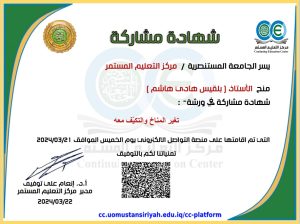A master’s thesis at the College of Science, University of Karbala, discussed the preparation of new heterocyclic derivatives of adamantane. The study, presented by student Zainab Muhammad Ali Saadoun from the Department of Chemistry, aimed to synthesize new derivatives of 3,6-diaza-homoadamantane, prepare new azo-azomethine compounds from 1-(4-methoxybenzyl)-3,6-diaza-homoadamantane-9-one derivatives, and evaluate the antibacterial activity of the target compounds against both gram-positive and gram-negative bacteria, comparing the results with a control drug.
The study involved the preparation of advanced azomethine compounds from 1-(4-methoxybenzyl)-3,6-diaza-homoadamantane-9-one. The reaction of ethylenediamine with paraformaldehyde produced thiotropin. The reaction of 1,3,6-tetraaza-tricyclo[4.4.1.13,8]dodecane A with anisel acetone yielded 1-(4-methoxybenzyl)-3,6-diaza-homoadamantane-9-one B, which reacted with hydrazine hydrate to produce 1-(4-methoxybenzyl)-3,6-diaza-homoadamantane-9-one hydrazone C. The latter was converted into derivatives by heating it with various aldehydes including para-benzaldehyde, 4-chlorobenzaldehyde, 4-bromobenzaldehyde, 4-nitrobenzaldehyde, 3-chlorobenzaldehyde, 3-hydroxybenzaldehyde, and 4-carboxybenzaldehyde using reflux in ethanol to obtain diaza-homoadamantane amines (D-D7). The new compounds were characterized using FT-IR, ¹H-NMR, ¹³C-NMR, and mass spectrometry. The antibacterial activity of the new compounds (A, D-D7) was studied, with compound A and D2 showing high efficacy against *Staphylococcus aureus*, while compound D demonstrated high activity against *Escherichia coli*. The inhibition zone results were compared with the reference antibiotic (gentamicin as a control).
Conclusions of the Study:
1. The extended conjugation of the produced thiotropin with the ketone group confers significant stability.
2. All resulting compounds were resonantly stable and had relatively high melting points, as evidenced by their stability levels.
3. The synthesis of all 3,6-diaza-homoadamantane derivatives was characterized by FTIR, H-NMR, C-NMR, and mass spectra. The method has several advantages, such as high yield, ease of execution, and safer reaction conditions.
4. This study provides valuable molecular insights that can be utilized to test the antibacterial activity of the newly synthesized compounds and to further improve their antioxidant properties.
5. The reflux method is an effective technique, offering a suitable reaction time and good yield for the preparation of Schiff bases from 3,6-diaza-homoadamantane-9-one.































































